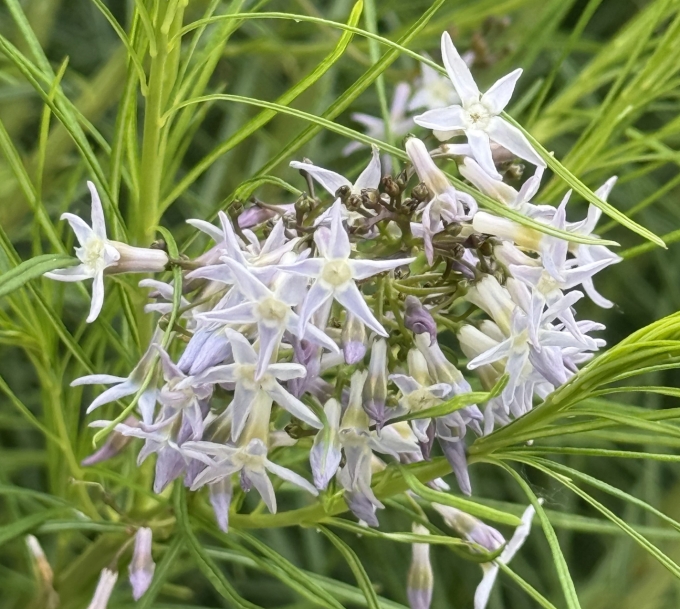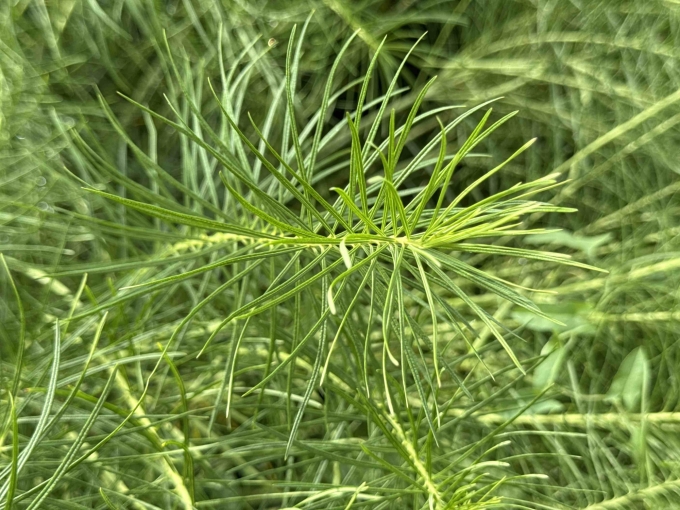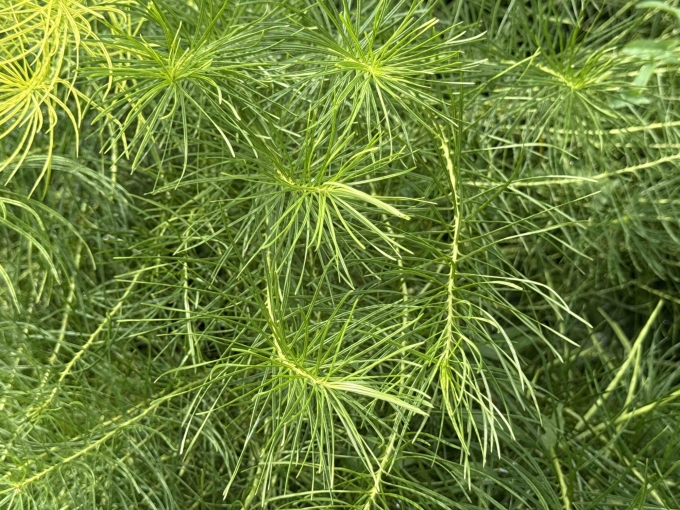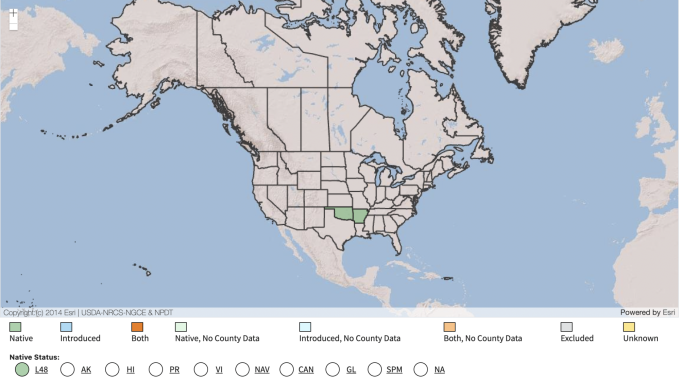Common Name: Threadleaf Bluestar
Family: Apocynaceae
Plant Type: Herbaceous Perennial
Hardiness Zones: 5–9
Height: 2.0 to 3.0 feet
Spread: 2.0 to 3.0 feet
Bloom Time: Late April to May
Bloom Description: Pale blue, star-shaped flowers in airy clusters
Sun Exposure: Full sun to part shade
Water Needs: Medium
Soil Preference: Well-drained, sandy or loamy soil
Management Level: Low
Suggested Use: Borders, mass plantings, native-inspired designs
Attracts: Pollinators, butterflies
Tolerates: Drought, deer, rocky soils
Notable Features: Fine-textured foliage, golden fall color, clump-forming habit
Native Range: Ouachita Mountains of Arkansas and Oklahoma; not native to Nebraska but well-adapted to Great Plains gardens.
Nebraska Growing Notes:
Though not native to Nebraska, Amsonia hubrichtii performs exceptionally well in well-drained soils and full sun across the state. Its feathery, thread-like foliage provides soft texture throughout the growing season and turns brilliant gold in fall—making it a standout for three-season interest. In spring, it produces light blue star-shaped flowers that attract early pollinators.
It’s a tough, long-lived perennial that thrives with little care once established, and is especially valued in low-water and native-inspired designs.
Landscape Use:
Perfect for massing in perennial borders, prairie-style gardens, or as a fine-textured contrast to bolder plants like rudbeckia, echinacea, or ornamental grasses. Also suitable for modern, matrix-style landscapes where movement and foliage texture are key.
Caution:
Slow to establish in the first year or two but becomes dense and reliable over time. Avoid rich, overly moist soils to prevent legginess.
Garden Locations:
Sources:
https://plants.usda.gov/plant-profile/AMHU




